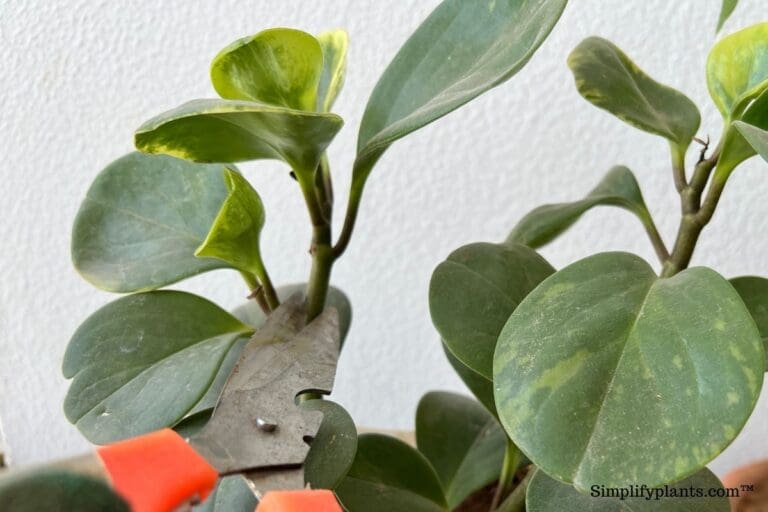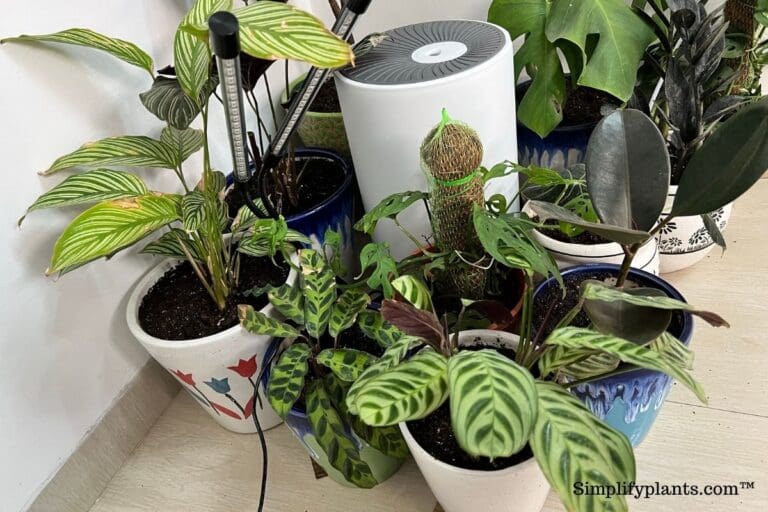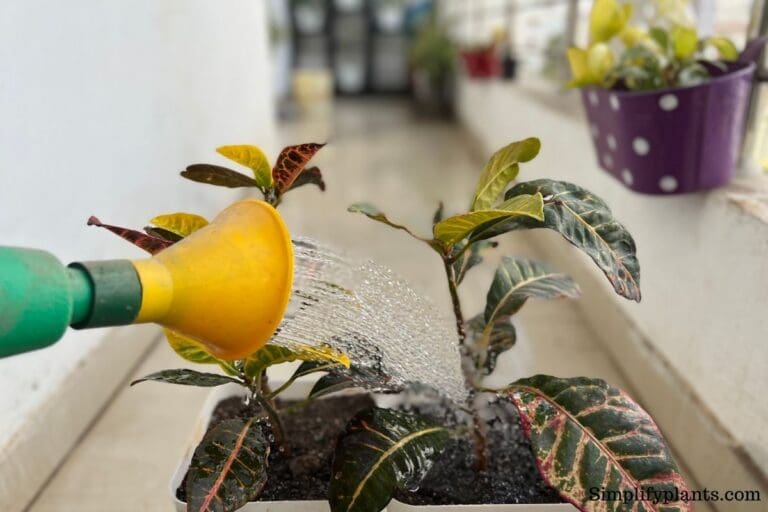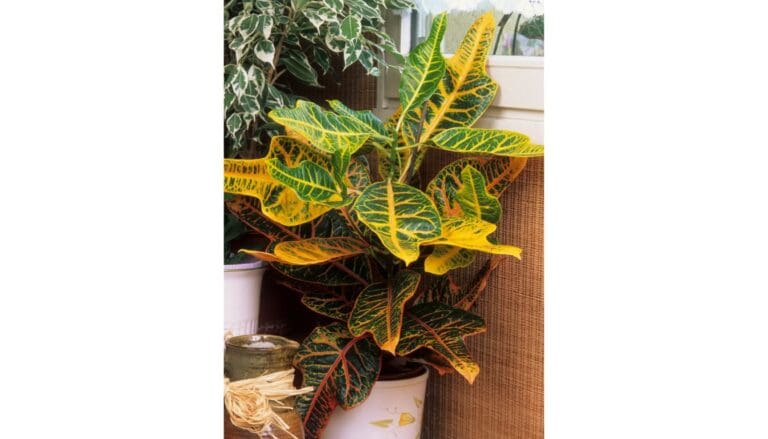Does ZZ Plant Need Misting? (+Humidity Requirement)
If you are new to the hobby of houseplants, you might have heard about misting. While some people suggest you must mist your ZZ plant multiple times in a day, others advocate it as a total waste of time. But which side should you listen to? Do ZZ plants like misting? Let’s find out!
ZZ plants don’t require misting. People have a misconception that misting will significantly improve humidity levels, which will improve the plant’s growth. However, studies have proven that it adds marginally to the humidity levels. In contrast, wet foliage might attract pests and diseases.
Whether you are in favor of misting or against it, what’s more important is maintaining the ideal humidity levels.
And if you are unsure about humidity levels and how it impacts your ZZ plant, then you must read this article till the end.
In this article, we have shared all the tried and tested ways to improve a space’s humidity level.
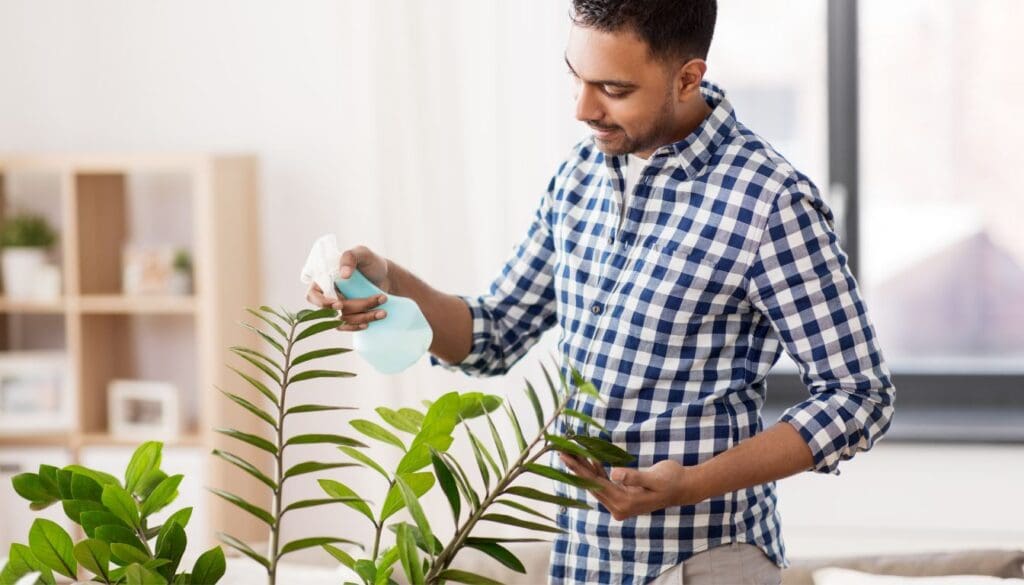
Please note: Simplify Plants is reader-supported. Some links in the post are affiliate links and I get a commission from purchases made through links in the post.
Do ZZ plants like to be misted?
No, the ZZ plant doesn’t like to be misted. In fact, it doesn’t matter much to the plant whether you mist them or not. People mist their plants either to clean the leaves or to help with the humidity.
Yes, misting the plant might help keep the foliage clean, but that doesn’t help much with the humidity.
According to studies conducted, If the room’s humidity level is below 50%, the water misted will dissipate and spread around without helping much with the humidity.
Whereas, if the room’s humidity level is above 60%, the water droplets will last in foliage for a long time, which may attract pests and fungal diseases. Thus, if your room’s humidity level is high and you keep on misting the plant, it will be counterproductive for your plant.
Yes, misting the plant when the humidity level is really low will marginally help, but that alone might not be enough for your ZZ plant. Thus, we need to take additional measures to achieve ideal humidity levels.
But before that, let us check out what is the opinion of various community members regarding misting.
| Pro-Misting | Against Misting |
|---|---|
| Helps with humidity | Humidity last’s for just a few minutes and doesn’t help much. |
| Helps clean the foliage and leaves | Can spread pests and diseases |
| Misting with a mix of neem oil can help prevent pest infestation | Misting can lead to leaf damage. |
I hope after understanding the basics of how misting and humidity works, you can make your own judgment call for misting your ZZ plant.
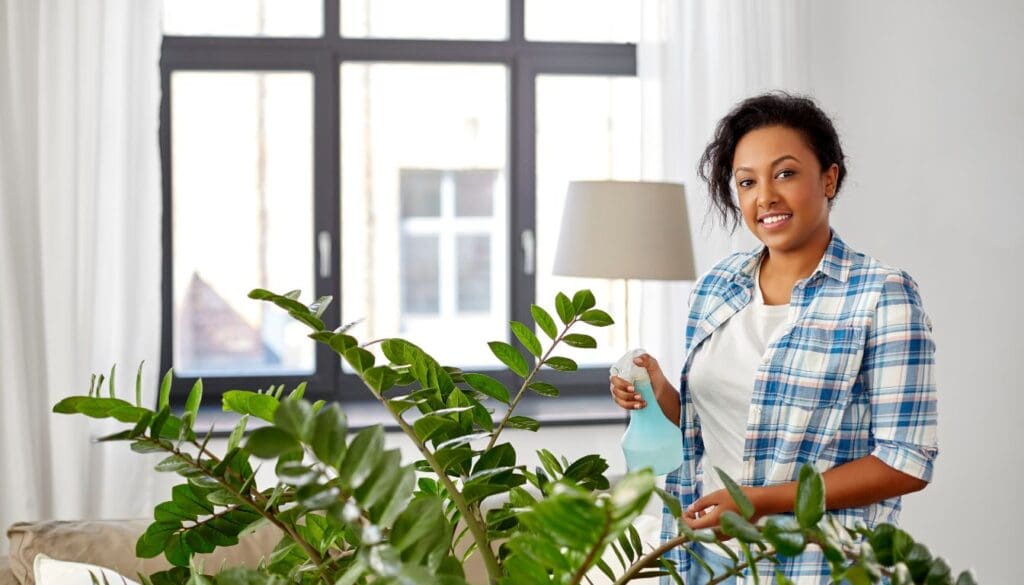
I personally don’t mist the ZZ plant at all. I only use the mister to spray neem oil for pest prevention and lukewarm water to clean the foliage whenever needed. However, if you are in favor of misting your plants, then here are a few key points to remember:
- Mist using lukewarm water. Too hot or Too cold temperature of water might shock the plant leading to wilting.
- Mist your plant in the morning and day time only. Misting in the evening might be counterproductive as the water will take a long time to evaporate, leading to pest problems.
So, with that taken care of, let us move ahead and learn more about humidity levels and how to maintain the ideal humidity level for your ZZ plant.
Do ZZ plants like humidity?
Originating from eastern Africa, the ZZ plant prefers a temperature between 65°-75° F and a humidity level around 40-50%.
In most average households, the humidity level is around 50% so, that should be ideal for your ZZ plant. Also, the ZZ plant is a hardy plant species that can thrive even if the conditions are not ideal for them.
However, many factors affect the humidity level of the space, including your location, weather, the HVAC system used for heating and cooling, and the spot for the plant itself.
But why is humidity such a big concern for a ZZ plant? Like most houseplant, the ZZ plant also goes through a process called transpiration. But what does the humidity of a space has to do with transpiration?
To understand this, let us see what happens during the transpiration process. Transpiration is the process of exchange of gases where the plant takes in carbon dioxide and releases oxygen into the environment.
So, when the pores open to exchange gases, the plant also loses moisture through the pores. And if the humidity of the space is too low, the plant will lose excess moisture that can be terrible for their health.
However, if the humidity level is ideal, the plant won’t lose too much moisture and will remain healthy.
Thus, it is crucial to check your home’s humidity as the ZZ plant will suffer if the humidity level is too high or too low than the average.
How to check humidity level of your room?
The simplest way to check the humidity of a room is by using a hygrometer. A hygrometer is a simple device that helps to measure the temperature and humidity of space and display it on the screen.
These small devices might be cheap but do their job exceptionally well. Here is a hygrometer I got from Amazon.
I really liked it, and maybe you can give it a shot as well. Even if you don’t like the particular one, you can go ahead and get another model. But make sure you have one as it will make your work a lot easier.
How much humidity does ZZ plant need?

On average, most ZZ plants thrive in a relative humidity level of 40-50%. These plants do not complain even if the humidity level fluctuates a little bit. But an extreme fluctuation can be terrible for the health of your plant. Thus, you need to be aware of the same.
Your ZZ plant will give you certain signs of too much humidity or when the humidity level is not enough. It is crucial to keep an eye on such signs and take necessary actions to prevent any future problems.
Signs your ZZ plant need more humidity
While pests and fungal infection are the signs of excess humidity, your ZZ plant will also tell you when the humidity levels are extremely low. Some of the signs of low humidity levels in ZZ plants are:
- Brown tips
- Yellowing of leaves
- Crisp foliage
- Dehydrated foliage
- Curling of leaves
- Droopy plant
- Leaves losing their color
Most of these problems are an indicator of low humidity levels. If all other care needs are met, you might have to look into your space’s humidity level. It might be a culprit that most people miss to notice.
I still remember when I was new to the hobby, and I didn’t have a hygrometer, I was left wondering why my houseplants were suffering when I was doing everything right.
I soon realized as the winter was approaching and the humidity level was dropping, the plant might have been impacted by the same. I ordered a hygrometer and Bingo! That’s what has happened.
But now what? I reached to the community for help, but most people told me about misting and pebble trays.
Yes, they used to work, but at the same time, it was a lot of work and time commitment, which I didn’t have. So, I searched for some unique and different ideas, and here is what I have learned.
How to maintain ideal humidity level for ZZ plant?
Misting alone won’t help you to maintain the ideal humidity level for your ZZ plant. You need to take some additional measures, especially if you live in an arid area.
Although your ZZ plant will survive through average humidity levels, you need to take these measures only if the average humidity goes below 30%.
However, most of these can be used in the longterm for better success with the plant.
Use a humidifier

A humidifier can be a blessing in disguise for the plant owners who are struggling to maintain an ideal humidity level in their space.
When I first moved to a deserted arid city, I noticed my plants have started suffering. And that’s when I realized I need something perfect to maintain the plant’s ideal humidity level.
After trying out various brands, I finally settled for this excellent humidifier that I found on amazon. It worked like a charm, and my plant’s happiness can be seen in their growth after that.
I would definitely recommend using an ideal size humidifier for your tropical plant, especially if you live in an arid area.
Consider adding an aquarium
Have you noticed how plants thrive around water bodies in nature? That’s because a water body can provide the plants with appropriate humidity levels around it.
The same principle works at our home as well. The aquarium’s water will naturally evaporate and raise the humidity of the space, helping the plants in the space.
And yes, before you question and compare it with pebble trays, Let me tell you I compared the levels using both of these methods and measure the result with a hygrometer.
The result after using an aquarium was much better. In fact, it raised the humidity level by 5% extra than what the pebble tray did.
Yes, alone this might not be enough as well. But combine it with other methods, and it works like a charm.
On a side note, the aquarium also adds to the beauty of your space, and you can use the water from the aquarium as a fertilizer as it is rich in nitrogen as well.
A reptile terrarium like this one(Amazon) will also serve the purpose.
Use a mini green house
Have you seen those big greenhouses outdoors that helps to grow food even in extreme conditions? Yes, I am talking about a miniature version of the same.
These can be an excellent way to trap moisture in a small controlled environment. These can boost the growth of your ZZ plant even in adverse living conditons.
There are a lot of choices for these greenhouses and terrariums available online. You may also DIY these if you are a little handy.
You can choose from the wide range of terrariums and mini greenhouse on Etsy.
Group your plants together
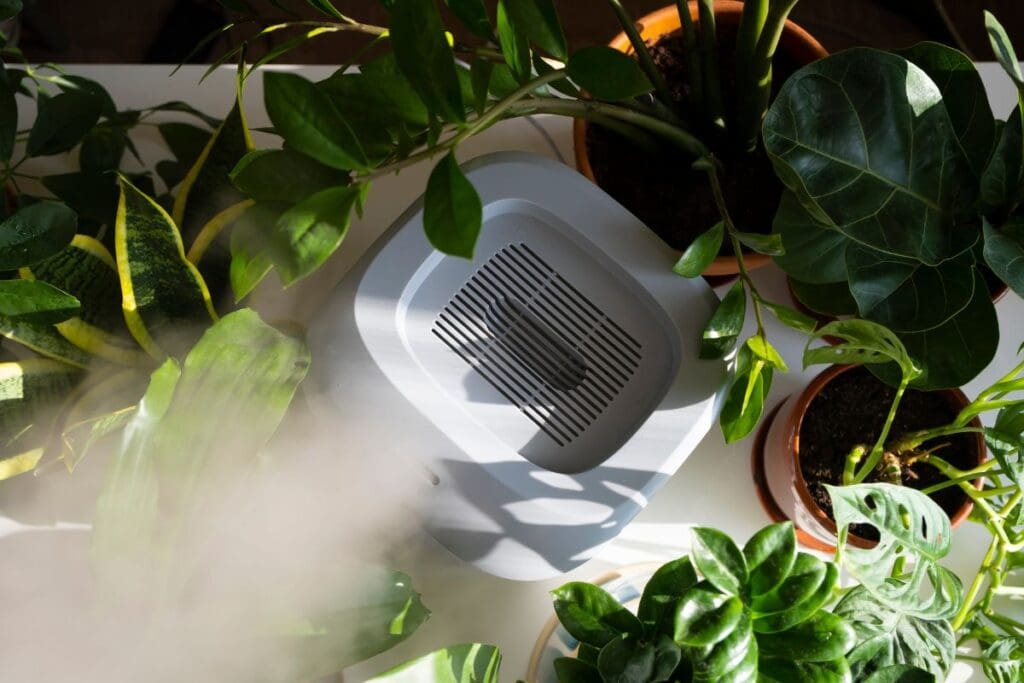
Grouping all your tropical plants together can marginally help with the humidity levels. Yes, it won’t do much, but you don’t need to put extra effort once you house them together.
But what happens when we group our plants together? The plants release a small amount of moisture in the air during transpiration.
But when grouped together, the moisture from one plant helps others, and together they can marginally increase the humidity level of the space.
However, there is a problem to be aware of. Pests spread like crazy, and if you don’t notice and any of the plants is infested, then all of the plants in the group will suffer after someday.
So, be aware of the same. I have learned this lesson the hard way as pests from my fern affected all my other plants.
Final Words

Is misting your ZZ plant a good idea? No, misting your plants daily won’t do much good but might lead to pest infestation and other problems if done incorrectly.
We just learned that misting alone is not enough to maintain ideal humidity levels in arid areas. So, you need to take additional measures to maintain the right humidity around the plant.
ZZ plants are among the sturdiest plant I have ever seen. It would help if you kept them in a warm and average humidity spot.
Apart from that, these plants don’t ask for much but add a charm to their added space.
Source: Wikipedia, University of Florida, University of Vermont.
Recommended Garden Supplies
| Product Image | Our Recommended Gardening Supplies | Check Offers! |
|---|---|---|
Top Top
Top
Top
Top
Top
Top
Top
Top | rePotme Houseplant and Tropical Classic Potting Soil Mix | Check Offer On Amazon |
 Top
Top
Top
Top
Top
Top
Top
Top | Espoma Organic Indoor Plant Food | Check Offer On Amazon |
 Top
Top
Top
Top
Top
Top
Top
Top | GooingTop LED Grow Light 6000K Full Spectrum Clip Plant Growing Lamp | Check Offer On Amazon |
 Top
Top
Top
Top
Top
Top
Top
Top | Soil Moisture Meter | Check Offer On Amazon |
 Top
Top
Top
Top
Top
Top
Top
Top | Govee Hygrometer Thermometer, Bluetooth Enabled! | Check Offer On Amazon |
 Top
Top | LEVOIT Humidifiers for Large Room(Best For Plants) | Check Offer On Amazon |
 Top
Top
Top
Top
Top
Top
Top
Top | Upgraded DIY Automatic Drip Irrigation Kit, 15 Potted Houseplants Support | Check Offer On Amazon |
 Top
Top
Top
Top
Top
Top
Top
Top | Stainless Steel Heavy Duty Gardening Tool Set | Check Offer On Amazon |
 Top
Top
Top
Top
Top
Top
Top
Top | Bonide Insecticidal Soap | Check Offer On Amazon |
 Top
Top
Top
Top
Top
Top
Top
Top | Bonide 32 oz Spray Neem Oil for Organic Gardening | Check Offer On Amazon |
 Top
Top
Top
Top
Top
Top
Top
Top | Garden Safe Fungicide | Check Offer On Amazon |

